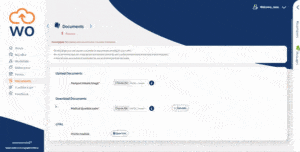Starting a new job is always going to be one of life’s scarier experiences but, really, what’s the worst that could happen?
Well, how about turning up on your first day to find the workplace is abandoned, or being given an internal exam because of a paperwork error. Or your first task being to clear away the personal items left on your desk by its previous occupant.
These are just some of the real-world horror stories revealed by respondents to a global survey into onboarding. Employee onboarding covers all of the HR tasks required to integrate new hires into a company – from contracts and references to policy guides and first day preparations.
It’s a critical stage of the hiring process but one which 68 percent of organisations are still handling manually – typically using a combination of posted paperwork, phone calls and emails. It creates a slow, inefficient and error-prone HR operation.
Nearly four out of ten employees (39 percent) surveyed said they had encountered problems during onboarding. And for 15 percent, these negative experiences had caused them to dropout of the hiring process.
Here’s a look at some of the onboarding horror stories revealed by the survey respondents:
The Abandoned Office
One of the most common problems experienced by new starters is a lack of first-day preparations. Desks aren’t allocated, logins haven’t been set-up and they’re met with general bewilderment about who they and what they should be doing.
A typical comment was:
“I turned up at a new job to find the person who hired me was away for a week and no one else knew what I was supposed to do. No desk, nothing. Standing in the middle of the office while they all just looked at me blankly.”
But for one onboardee, the first-day problems went a stage further:
“At a recent job, my assigned office was completely empty, with no furniture, computer, phone or anything. They gave me a box of tissues on the first day and that was it.”
The Admin Terror
A lack of clear onboarding communications can lead to a host of negative experiences for new starters. This starts with the task of actually finding and getting into their new workplace. It creates frustrating experiences such as this:
“I arrived to what I thought was the location and was told that I was in the wrong place and the right place was 15 minutes away. When I finally arrived and completed all of the paperwork, I then had to report back to the first location to begin work.”
And this:
“Security didn’t have my details so wouldn’t allow me through the parking gates. I was keeping all the staff from coming into work.”
But these pale in comparison to the traumas caused to one new starter by an administrative mix-up:
“I was put through a full body physical, including an internal exam. The company had sent me the wrong paperwork and I was actually supposed to get a drug test.”
The Pain of Paperwork
The reliance on manual and paper-based processes to handle large amounts of onboarding info makes errors and inefficiencies inevitable for HR teams. One respondent said:
“The HR department got my location wrong, gave me the incorrect start date and failed to send me any information regarding expectations of starting, such as who to ask for, what time to get there, what to bring with me.”
Another said:
“My offer letter was made out to someone in a different name.”
These kinds of mistakes don’t just create frustrations for onboardees, they also pose a significant legal risk if errors are made during the contract process. And it doesn’t help when the documents that new starters are asked to sign are unreadable:
“I was given a stack of papers to fill out that had been copied so many times that you could not read them.”
Solution: Switching to an automated process
These examples provide a snapshot of some of the typical onboarding experiences new starters are faced with but it doesn’t have to be this way. They are all symptoms of failing HR operations which are reliant on outdated management methods that aren’t able to handle this crucial stage of the hiring process.
The business consequences of failure are significant. Onboarding inefficiency can lead to higher dropout rates, demoralised workers, reduced productivity and the legal risks caused by data compliance breaches and admin errors.
It’s the reason that more organisations are moving over to automated systems that transform the way that onboarding is able to be managed. Webonboarding handles all of the communications via an online portal.
With digital signing, it removes the need for paper documents to be mailed out or physically shuffled between offices and departments. A cloud-based system allows each stage of the process to be managed and monitored in real-time.
Contact us and let us see how your current employee onboarding processes are working out and how we can help improve them.




